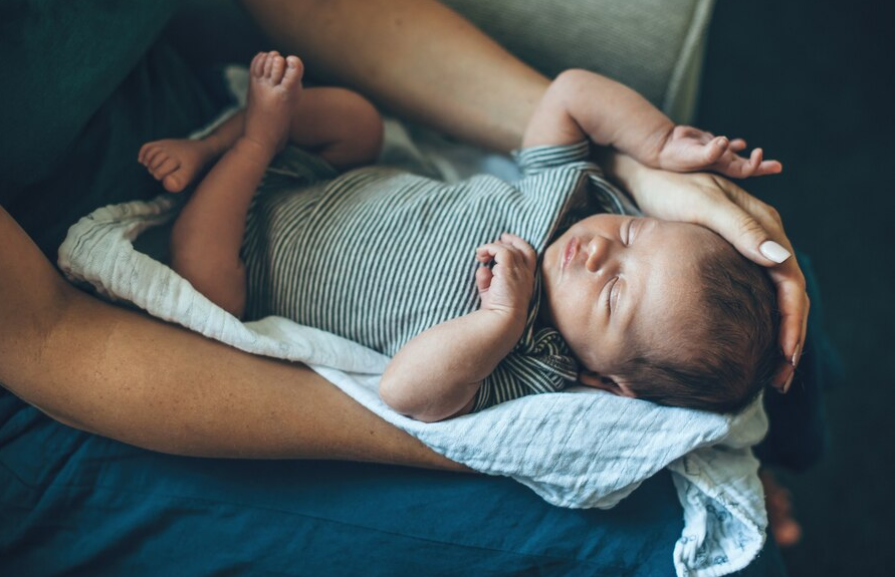As a parent, ensuring your baby’s safety during sleep is paramount. Tragically, many infants die unexpectedly while sleeping, often due to Sudden Infant Death Syndrome (SIDS) or accidental suffocation and strangulation. To minimize these risks, it’s crucial to create a safe sleeping environment for your baby. Below are some essential guidelines and tips to help you safeguard your baby’s sleep.
Always Place Your Baby on Their Back
One of the most effective ways to reduce the risk of SIDS is to place your baby on their back to sleep, for at least the first year of life. Babies who sleep on their sides or stomachs are at a higher risk of SIDS because they can more easily roll onto their stomachs, which can obstruct their airway.
Some parents worry about their baby choking while sleeping on their back, but a baby’s airway anatomy and gag reflex are designed to prevent this. From birth, babies should be placed skin-to-skin with their mothers for at least the first hour, and then on their backs in a bassinet. Preterm infants might initially sleep on their stomachs in the hospital due to breathing issues, but should transition to their backs as soon as possible.
If your baby can roll over on their own from back to stomach and stomach to back, you do not need to reposition them on their back if they roll over in their sleep. However, make sure there are no loose bedding, pillows, or stuffed toys in the crib that could pose a suffocation hazard.
Use Firm Sleeping Surfaces
Your baby’s crib, bassinet, or play yard should meet current safety standards, with a firm mattress covered by a fitted sheet. Avoid placing any other items in the crib. The mattress should not indent when your baby lies on it. Soft surfaces like couches, armchairs, or adult beds are not safe for infant sleep as they can lead to suffocation or entrapment.
Bed-Sharing Precautions
Bringing your baby into bed for comforting and feeding is common, but it’s essential to place them back in their own sleeping space before you fall asleep. If you might fall asleep while feeding or comforting your baby in bed, ensure there are no pillows, sheets, or blankets that could cover their face, head, or neck.
Avoid bed-sharing entirely if your baby:
- Is younger than 4 months old
- Was born prematurely or with low birth weight
- Could be exposed to smokers, even if they do not smoke in bed
- Was exposed to smoking during pregnancy
- Could be affected by any medications or substances that make it harder for you to wake up
- Would be sleeping on a soft surface like a couch, waterbed, or an old mattress
Room-Sharing Without Bed-Sharing
For at least the first six months, and ideally up to a year, keep your baby’s sleep area in your room. Place their crib, bassinet, or play yard close to your bed. Room-sharing significantly lowers the risk of SIDS and makes it easier to monitor, feed, and comfort your baby.
Keep the Sleep Area Free of Hazards
Avoid placing loose bedding, pillows, toys, and bumper pads in your baby’s sleep area. These items can increase the risk of suffocation, strangulation, or entrapment. If you are worried about your baby getting cold, use infant sleep clothing like wearable blankets instead of loose blankets.
Additional Tips for Safe Sleep
- Use a Pacifier: Offering a pacifier at nap time and bedtime can reduce the risk of SIDS. If you are breastfeeding, wait until breastfeeding is well established (usually by 3 to 4 weeks) before introducing a pacifier.
- Avoid Overheating: Dress your baby in appropriate sleep clothing and keep the room at a comfortable temperature. Overheating is a risk factor for SIDS.
- Vaccinations: Ensure your baby is up-to-date with vaccinations. Evidence suggests that immunizations can reduce the risk of SIDS by 50%.
Consulting a Specialist
If you have concerns about your baby’s sleep, consult your pediatrician. For parents in Faridabad, Savera Child Clinic offers expert advice and the best pediatric care. The clinic provides comprehensive guidance on creating a safe sleep environment and addressing any sleep-related issues.
By following these guidelines and seeking professional advice, you can help ensure that your baby sleeps safely and soundly. Prioritizing safe sleep practices is a critical step in protecting your child and giving them the best start in life.

